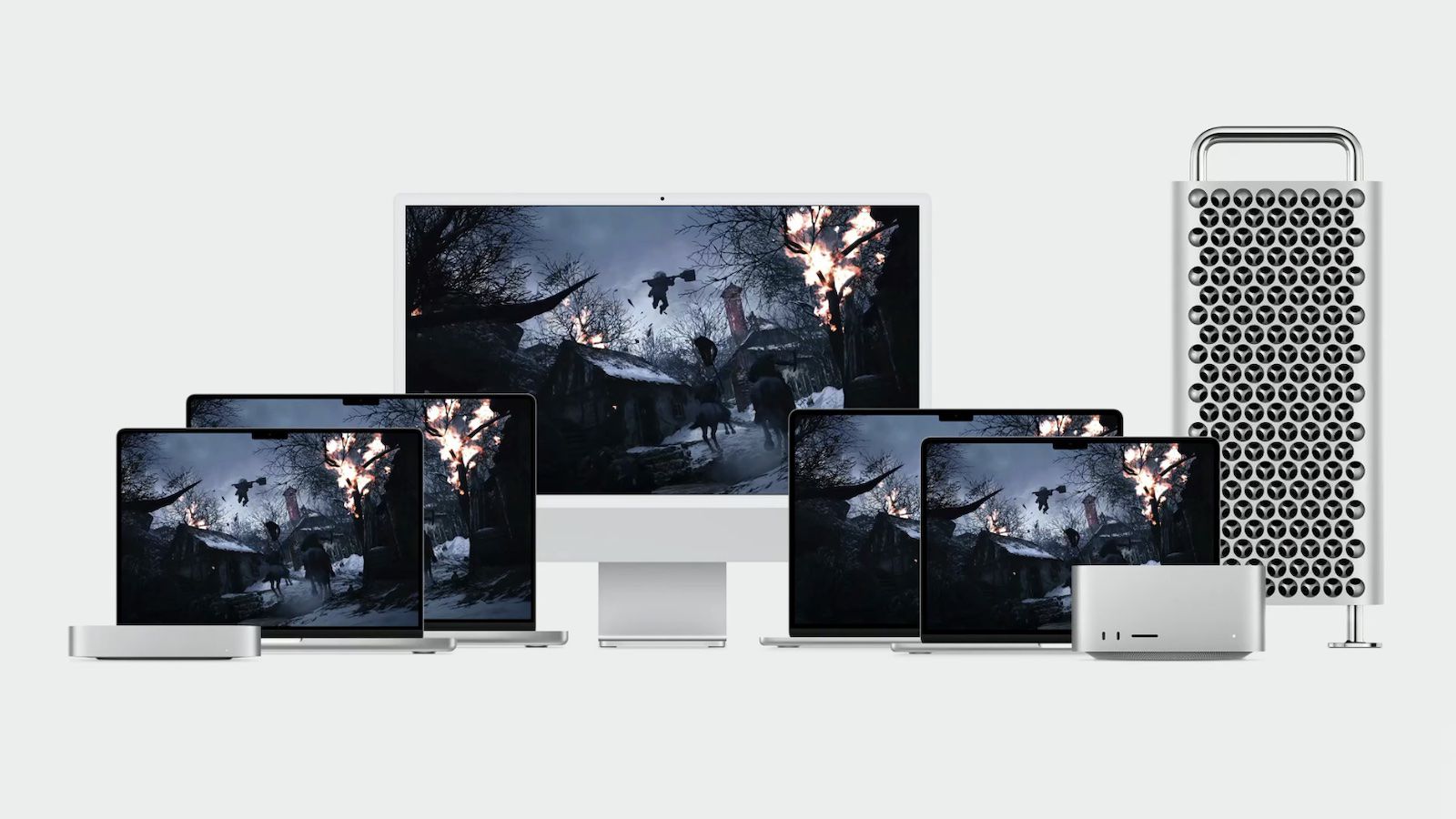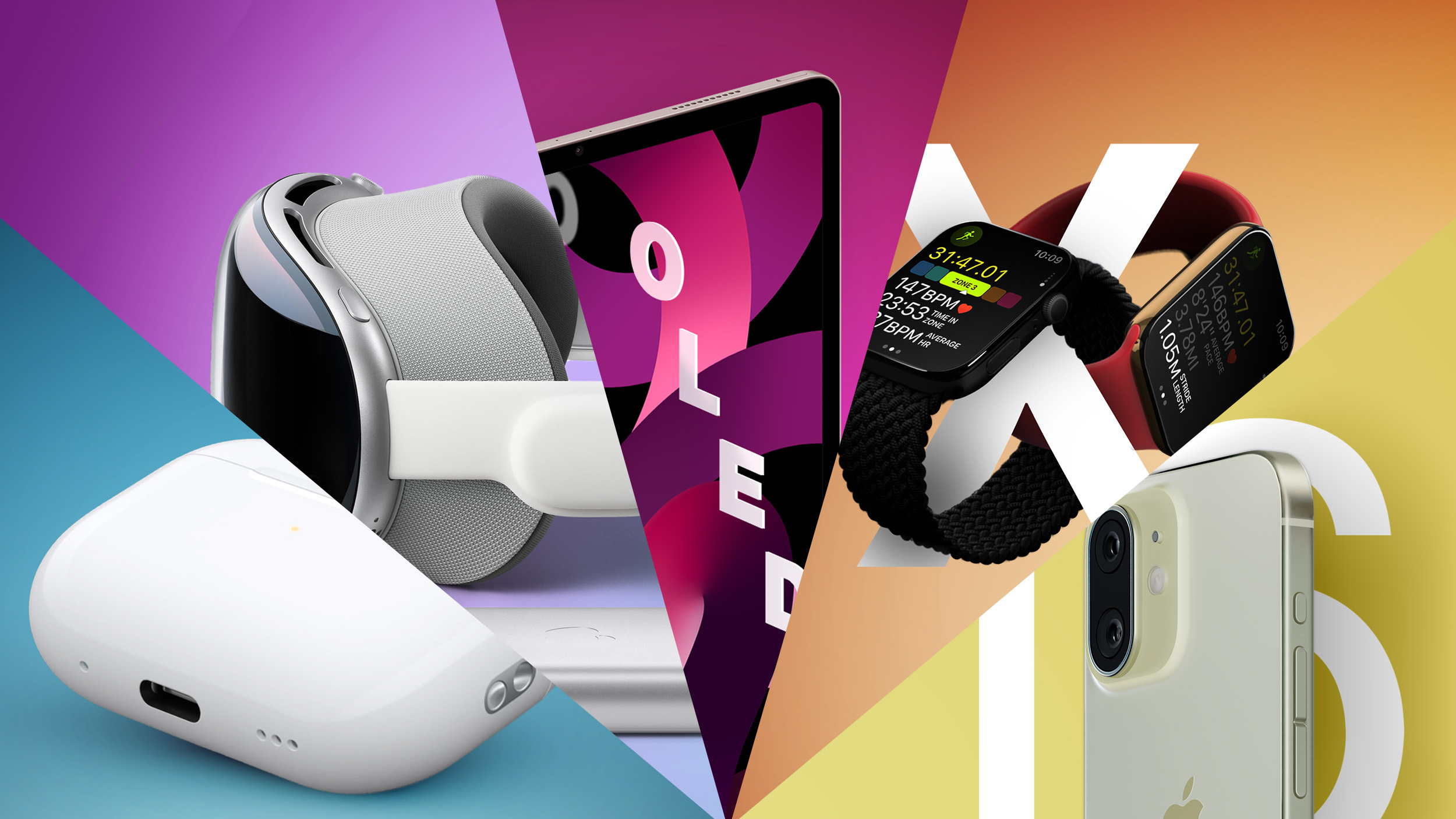![]()
2024 is shaping up to be a landmark year for Apple, with the company set to enter a new product category for the first time since 2015. We're counting on the Vision Pro headset, new iPads, an impressive new Apple Watch, and so much more.
Below, we've highlighted the top five most interesting Apple product updates that are set to come out in 2024.
AirPods 4
New AirPods coming in 2024 will have an updated design with shorter stems, so they'll look something like a cross between the current AirPods and the AirPods Pro. Fit and sound quality will be improved, and there is one more major change -- two models.
There will be two versions of the AirPods 4 at different price points, and the more expensive model will have Active Noise Cancellation, a feature that has been limited to the AirPods Pro. The AirPods 4 will also get an updated case that has a speaker for Find My alerts and a USB-C charging port instead of a Lightning port.
Apple's AirPods 3 were similar in function to the AirPods 2 and had a limited number of new features to lure customers, so a fresh look and ANC at a lower cost than the AirPods Pro should make the AirPods 4 much more appealing.
OLED iPad Pro
Apple is bringing OLED technology to the iPad Pro in 2024, and it'll be the first time that Apple has released such a large OLED display. Compared to mini-LED or LED, OLED offers deeper blacks, better contrast, improved HDR, and better power efficiency.
The new iPad Pro models are going to get a redesign and will come in updated 13-inch and 11.1-inch sizes. OLED displays are thinner, so Apple may be able to slim down the new iPad Pro models, plus we can count on a faster M3 chip that's an upgrade over the M2 in the current model.
We haven't had an iPad Pro design update for years, and a new look with updated display technology is a welcome change.
Apple Watch X
We're due for the Apple Watch Series 10 or "X" next year, which lines up with the 10th anniversary of the Apple Watch if you're counting from the 2014 introduction date rather than the 2015 launch date.
The 2024 Apple Watch is going to get a refreshed design that may include a slimmed down body and a new magnetic band attachment system. A magnetic band attachment method would allow Apple to save valuable internal space inside the Apple Watch for a larger battery or other components, but it might mean that existing bands are not compatible with the new model.
Along with a new look, the Apple Watch X is rumored to feature blood pressure monitoring and sleep apnea detection. Blood pressure monitoring on the wrist is a notable feat, and the Apple Watch will be able to tell the user if their blood pressure is trending upwards and heading toward hypertension. Specific systolic and diastolic readings won't be available, but blood pressure monitoring will still provide valuable information.
As for sleep apnea, the Apple Watch X will use sleep tracking and monitoring of breathing patterns to determine whether a person is possibly experiencing breathing interruptions during sleep. The information will be able to be relayed to a doctor for further testing.
iPhone 16
The standard iPhone 16 models will get several of the features that were limited to iPhone 15 Pro models, including the Action Button and a faster 3-nanometer A-series chip. The Action Button could be capacitive this year rather than mechanical, so Apple might be able to slim it down.
A new vertical camera lens arrangement will likely allow for capturing spatial video, a feature limited to the iPhone 15 Pro models right now. Apple is also adding a new capacitive Capture Button to all four iPhone 16 models, with the button located on the right side of the device below Power button. The button will sense pressure and will support haptic feedback, and rumors suggest it will be used for capturing video.
While the standard iPhone 16 models will have same design as the iPhone 15 models, the iPhone 16 Pro models will feature larger displays. The iPhone 16 Pro will measure in at 6.3 inches, up from 6.1 inches, and the iPhone 16 Pro Max will be 6.9 inches, up from 6.7 inches.
Other iPhone 16 Pro-exclusive rumors include a 48-megapixel Ultra Wide lens, Wi-Fi 7, and a faster 5G chip from Qualcomm.
Vision Pro
It's been half a year since Apple unveiled the Vision Pro headset, and in early 2024, customers are finally going to get to try it out.
Apple sees the Vision Pro as the future of computing, referring to the device as the first spatial computer. It is a mixed reality headset, so you'll be able to swap between AR and VR using a Digital Crown on the side of the device. It won't be quite like any other headset on the market because Apple is using super high-resolution micro-LED displays with hand and eye tracking for controls.
Immersive apps, games, and experiences are planned for the Vision Pro, and users will be able to record spatial video to play back on the device.
The Vision Pro isn't at the top of our list because it's not going to be for everyone. It's prohibitively expensive at $3,500, and Apple is manufacturing a limited number of the headsets due to their complexity. At launch, the Vision Pro will only be sold in the United States, further limiting its availability.
People who have been able to try out the Vision Pro have said the initial iteration can be heavy and uncomfortable to wear, which will deter some users, but even with all of these caveats, the Vision Pro is going to shape Apple's future for some time to come.
Add Yours
What are you looking forward to seeing from Apple in 2024? Let us know in the comments below.
Article Link:
Top 5 Apple Products to Look Forward to in 2024




